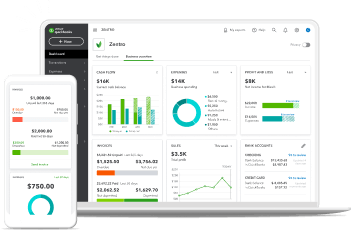Steps to conduct CVP analysis
Now that you know what CVP analysis is, here are the necessary steps to determine how you can calculate your own CVP analysis metrics:
Identify fixed and variable costs
It’s very important that you have these two figures in mind when conducting a CVP analysis over a given period. You can start by creating a list of all your expected business expenses.
If the cost of something doesn’t alter despite changes in production levels, then it’s a fixed cost. These are things such as your office space rent and monthly subscription costs.
If the cost does alter with changes in production levels, they’re considered variable costs. For example, the material cost in the first month might be $500 for 1000 units. However, in the next month, 2000 units are sold, so the material cost would be $1000.
Having a good grasp on these figures is essential for generating financial projections.
Calculate contribution margin
The contribution margin is a key metric to determine whether the pricing of a specific product or service is leading to profit. It’s calculated using the following formula:
Contribution margin (CM) = Revenue (R) - Variable costs (VC)
We can also calculate the contribution margin ratio (CMR):
Contribution margin ratio (CMR) = (Revenue (R) - Variable costs (VC)) ÷ Revenue (R)
Let’s say that a business is generating a revenue on a sofa of $500. The variable costs to produce this sofa comes in at $400. So the contribution margin ratio would be as follows:
Contribution margin ratio (CMR) = (500 - 400) ÷ 500 = 0.2
We take this 0.2 and turn it into a percentage, giving us a contribution margin ratio of 20%.
There’s no hard and fast rule as to what is considered to be a good contribution margin ratio. However, anything above 50% is typically excellent. So, in the above scenario, the company might need to look into increasing prices, or decreasing their variable costs.
Determining break-even point
With the contribution margin found, we can now calculate the break-even point of a given product using the following formula:
Break-Even Point (BP) = Fixed costs (FC) ÷ Contribution margin (CM)
Let’s use the sofa scenario as an example, the contribution margin would be $100. And let’s say that the fixed costs for the business are $3000:
Break-Even Point (BP) = 3000 ÷ 100 = 30
So in this scenario, the company would need to sell 30 sofas over a given period,say, monthly, in order to break even on that product.



